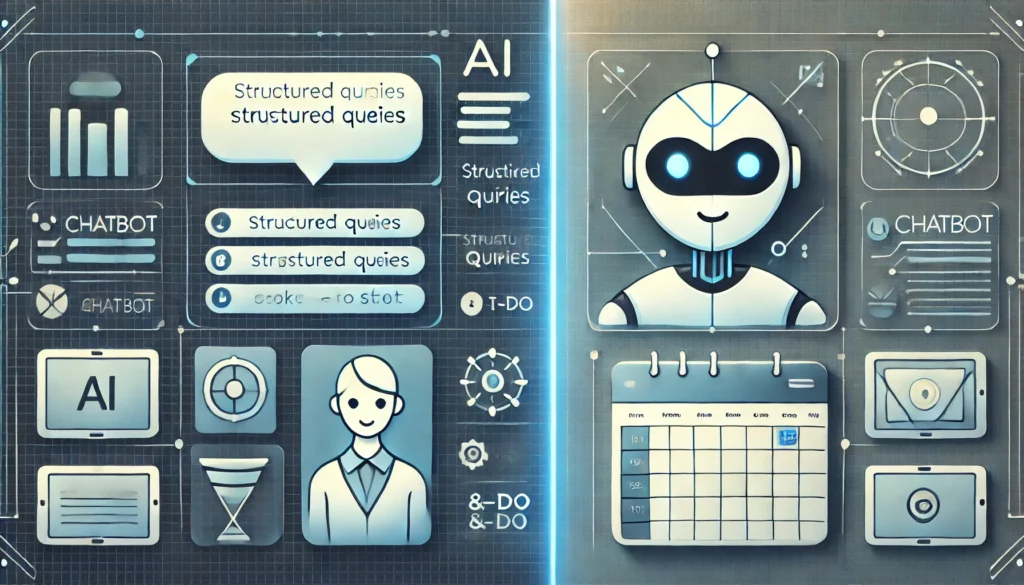The integration of Conversational AI chatbots and Virtual Assistants in the workplace is transforming how employees interact with digital tools, streamlining tasks, and improving overall efficiency. While both technologies enhance employee experience, they serve distinct roles. This article explores their differences, applications, and impact on employee productivity and satisfaction.
What is a Conversational AI Chatbot?
A Conversational AI chatbot is an automated program designed to simulate human-like interactions using Natural Language Processing (NLP) and Machine Learning (ML). These chatbots are used primarily for structured tasks such as:
- Answering Frequently Asked Questions (FAQs)
- Providing standardized responses to common inquiries
- Assisting in basic troubleshooting
- Guiding employees through HR policies, IT support, or onboarding
Example: A chatbot integrated with an HR system can quickly provide employees with leave balance information, saving HR personnel time from handling repetitive queries.
What is a Virtual Assistant?
A Virtual Assistant is an advanced AI-driven system that goes beyond rule-based interactions. It uses context awareness, machine learning, and predictive analytics to provide a more personalized experience. Virtual assistants can:
- Understand and process complex conversations
- Learn from past interactions to adapt responses
- Schedule meetings, send reminders, and manage calendars
- Integrate with multiple enterprise tools to provide unified support
Example: A virtual assistant like Microsoft’s Copilot AI or Google’s Duet AI can summarize lengthy emails, draft responses, and prioritize urgent messages based on an employee’s workload.
Key Differences Between Chatbots and Virtual Assistants
| Feature | Conversational AI Chatbot | Virtual Assistant |
|---|---|---|
| Primary Function | Task automation and answering FAQs | Context-aware support and personal task management |
| Complexity | Limited to predefined responses | Learns and adapts over time |
| User Interaction | Follows scripted conversations | Handles open-ended interactions |
| Integration | Specific use-case applications (e.g., IT helpdesk, HR) | Seamless workflow integration across tools |
| Adaptability | Static knowledge base | Continuously improves using AI and ML |
Impact on Employee Experience
1. Efficiency and Productivity
- Chatbots: Reduce response times by automating repetitive queries.
- Virtual Assistants: Assist employees in prioritizing tasks and managing workload effectively.
2. Personalization and Engagement
- Chatbots: Provide standardized responses, ensuring consistency but lacking deep personalization.
- Virtual Assistants: Adapt to individual user preferences, enhancing engagement.
3. Availability and Accessibility
Both technologies provide 24/7 availability, ensuring employees receive support at any time, particularly useful for global teams across different time zones.
4. Employee Support and Satisfaction
- Chatbots: Help new employees onboard faster by answering basic queries about HR policies and company protocols.
- Virtual Assistants: Proactively suggest relevant documents, notify employees about deadlines, and offer real-time workflow optimization.
Choosing the Right Solution for Your Organization
The decision to implement either technology depends on the company’s needs:
- Use a Conversational AI Chatbot if:
- The focus is on handling structured inquiries.
- Employees frequently need quick answers to repetitive questions.
- The organization wants to reduce workload on HR or IT teams.
- Use a Virtual Assistant if:
- Employees require task management and workflow automation.
- The organization needs AI to learn and adapt to user behavior.
- There’s a need for cross-platform integration (e.g., scheduling meetings, summarizing emails).
Future of AI in Employee Experience
As AI evolves, the line between chatbots and virtual assistants is blurring. Emerging AI-powered assistants are now capable of handling multimodal interactions, meaning they can process voice, text, and even visual inputs. The future of AI in the workplace will likely focus on:
- Increased personalization with AI models understanding employee preferences better.
- Better integration with enterprise software like CRM, ERP, and collaboration tools.
- Hybrid AI assistants that merge chatbot functionalities with advanced virtual assistant capabilities.
Frequently Asked Questions (FAQs)
What is the primary difference between a chatbot and a virtual assistant?
Chatbots handle structured, repetitive queries, while virtual assistants provide more complex, personalized interactions.
Can virtual assistants replace human employees?
No, virtual assistants support employees by automating tasks but do not replace human judgment and creativity.
Are chatbots suitable for all industries?
Yes, chatbots are widely used in IT, HR, customer support, and other fields for automating common queries.
Do virtual assistants require constant training?
Yes, they use AI and machine learning to improve over time based on interactions and feedback.
Which is better for improving employee experience, chatbots or virtual assistants?
It depends on the organization’s needs. Chatbots handle quick, simple tasks, while virtual assistants provide deeper engagement and workflow optimization.
Conclusion
Both Conversational AI chatbots and Virtual Assistants significantly improve employee experience by reducing manual work and increasing efficiency. While chatbots are best for quick, structured responses, virtual assistants offer adaptive, personalized interactions for improved task management. Organizations should assess their needs to choose the right AI-powered tool for optimizing productivity and employee satisfaction.


